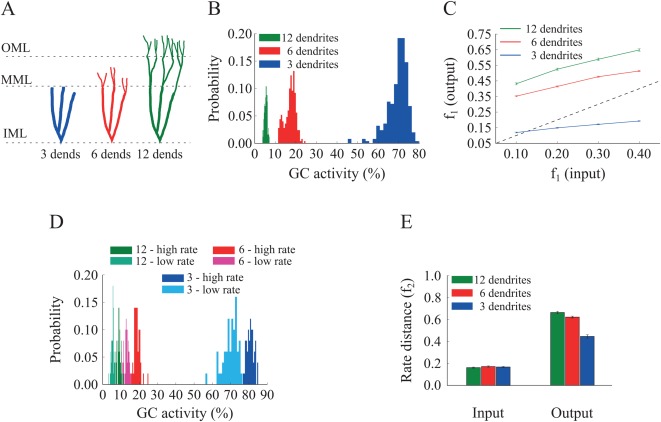Figure 5.

Effect of GC dendrite growth on pattern separation. A. A schematic drawing of the three GC models with three, six and 12 dendrites. B. Corresponding probability density functions of GC activity for the three GC models in response to a single input pattern at 40 Hz. The mean activity is inversely analogous to the number/length of dendrites: as dendrites grow, the GC population becomes sparser, i.e., fewer GCs are active. The respective mean firing rates of GCs are shown in Table 6. C. Input/output population distances ( ), for the 3‐dendrite (blue), 6‐dendrite (red), and 12‐dendrite (green) GC models in response to the presentation of two overlapping input patterns at 40 Hz, with different degrees of overlap, as depicted in Figure 1B. The dashed line denotes the limit above which the model performs pattern separation. Performance improves with the growth of dendrites. D. Probability density functions of GC activity for the three GC models in response to presentation of two input patters with different firing rates (low rate = 40 Hz, high rate = 50 Hz), as depicted in Figure 1C. GC activity decreases with the number of dendrites and increases with the input firing rate. The respective mean firing rates of GCs are shown in Table 6. E. Input/output rate distances (i.e., ) for the three models. The number of GC dendrites is again analogs to the pattern separation performance. [Color figure can be viewed at wileyonlinelibrary.com]
